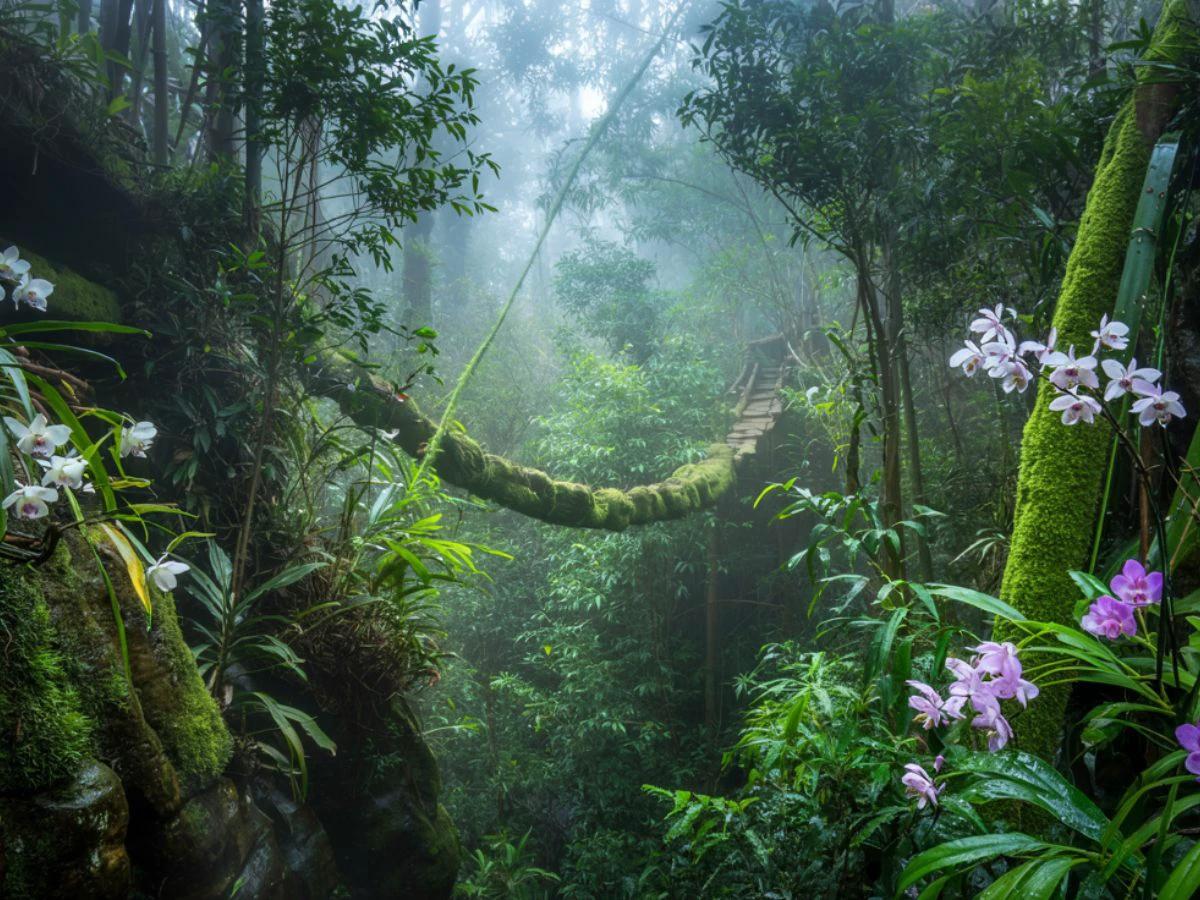Have you ever paused on a misty hillside and wondered what secrets the forest hides when tourists are gone? Not the cafés, not the viewpoints, but the living, breathing wonders tucked into the folds of the Indian hills .
It’s here that you find stories written not in books but in fur, feathers, and petals. Stories of rare species that survive against all odds – from the fiery-eyed red panda in Sikkim to fragile wild orchids blooming on mossy cliffs in Meghalaya.
Most travelers pass by without noticing. But if you slow down, look closer, and listen, the rare flora and fauna of India’s hills will change how you see the country’s wild heart.
Why the Indian Hills Are More Than Just Pretty Landscapes
For Gen Z and millennial explorers, travel isn’t about ticking off the obvious. It’s about connection. And the Indian hills offer something deeper than postcard views.
- Biodiversity hotspots: The Himalayas, the Western Ghats, and the Northeast together hold more than 30% of India’s recorded plant and animal species.
- Cultural ties: Locals don’t just live near these rare species. They weave them into folklore, healing traditions, and everyday rituals.
- Global relevance: With climate change threatening fragile ecosystems, spotting these wonders isn’t just magical – it’s urgent.
The hills aren’t just green escapes. They are treasure chests of survival and beauty.
The Red Panda – The Introvert of the Himalayas
I still remember standing in Sikkim’s Khangchendzonga National Park, watching the fog dissolve into pine forests. Suddenly, a flash of rust-red fur slid across the branches. A red panda.
Unlike the roaring tiger, this creature is shy. It prefers dawn and dusk, climbing trees like a quiet acrobat. Seeing one in the wild feels like stumbling on a secret.
Locals call it the “fire fox,” a guardian of Himalayan folklore. And yet, it’s endangered – with fewer than 10,000 left in the wild. Spotting it isn’t just travel magic, it’s a reminder that some wonders survive only if we notice them.
Wild Orchids – The Hidden Rainbows of Meghalaya
If you think flowers are just Instagram props, Meghalaya’s hills will school you.
Here, orchids don’t sit in fancy pots. They drip from mossy cliffs, hide in bamboo groves, and surprise you on mist-drenched trails. With more than 1,300 species found in India, many of them thrive in the Northeast – and some are so rare, they bloom for just a few weeks each year.
Walk through Mawphlang’s sacred groves or trek into the living root bridges, and you’ll see how orchids aren’t just pretty. They’re spiritual. For Khasi communities, orchids symbolize balance between humans and nature.
Hornbills in Nagaland – The Sky’s Storytellers
If you’ve ever heard the heavy beat of wings slicing through a valley, you know it’s not just a bird. It’s a hornbill.
In Nagaland, these birds are more than wildlife. They’re culture, celebrated in the annual Hornbill Festival. Their massive beaks, striking plumage, and haunting calls make them unforgettable for solo travelers hiking through jungle trails.
But the truth? Hunting and habitat loss once pushed them to the brink. Today, community-led conservation is giving them a second chance. Traveling here, you don’t just witness rare species. You witness resilience.
The Nilgiri Tahr – Standing on the Edge of the Western Ghats
Down south, the Western Ghats tell their own wild story. At Eravikulam National Park in Kerala, you climb misty slopes and suddenly find yourself face-to-face with the Nilgiri Tahr – a mountain goat with curved horns and steady eyes.
Perched on cliffs, they look like Himalayan guardians misplaced in the tropics. For solo hikers, the encounter is grounding. You realize you’re the guest here, not the conqueror.
Fireflies in Maharashtra – Hills That Glow at Night
Not all magic is in daylight. In the Sahyadris, just before monsoon, thousands of fireflies light up the hills. Imagine camping near Rajmachi or Purushwadi, and watching the trees sparkle like constellations that fell to earth.
This is not a zoo experience. It’s wild, untamed, fleeting. And it reminds you that sometimes the rare flora and fauna of India aren’t monumental – they’re tiny flickers that make the night unforgettable.
How to Travel Responsibly While Chasing Rare Species
The truth? Adventure without responsibility is exploitation. If you’re 18-35 and exploring the Indian hills, your choices matter.
- Hire local guides who know the land and its rhythms.
- Skip plastic – carry a steel bottle and cloth bag.
- Don’t chase selfies with wildlife. Observe from a distance.
- Stay in eco-stays that reinvest in conservation and community.
Because protecting rare species isn’t about being a savior. It’s about being a respectful guest.
Why This Matters Beyond Instagram
Sure, spotting a red panda or a bloom of wild orchids makes for stunning reels. But the story goes deeper.
- Every sighting supports eco-tourism, which funds conservation.
- Every responsible trip reduces pressure on overcrowded destinations.
- Every shared story sparks curiosity in others, creating a ripple effect.
Travel becomes activism when your footprints protect more than they destroy.
Conclusion
The rare flora and fauna of the Indian hills aren’t just checklists for wildlife enthusiasts. They’re metaphors. For resilience, beauty, and fragility.
Next time you plan a trip, don’t stop at viewpoints. Wander into sacred groves, sit quietly by a forest trail, or camp under starry skies. Because in those moments, you’re not just a tourist. You’re a witness to survival.
So add this to your 2025 travel list. Not for the gram. Not for the bucket list.
